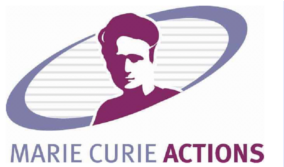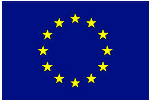| Title: |
Quantification
of mental fatigue by means of visual and physiological measures |
| Acronym: |
qFATIGUE |
| Number: |
269438 |
| Call
identifier: |
FP7-PEOPLE-2010-RG |
| Funding
scheme: |
Marie
Curie Actions - European Re-integration Grants (ERG) |
| Duration: |
36
months |
| Starting
date: |
October
1st, 2011 |
| Keywords: |
biomedical
engineering, neurophysiology, mental fatigue, video monitoring, EEG |
The
problem
Mental
fatigue is a symptom of many neuromuscular disorders and acute diseases
and is also closely associated with the long-lasting, repetitive and/or
monotonous activities of normal everyday of healthy individuals. It is
commonly defined as a state that involves mental and physical tiredness
or exhaustion, with a vast range of symptoms including poor
concentration, lack of motivation, tired eyes, yawning, and increased
blinking. In neuromuscular rehabilitation, mental fatigue of a patient
is closely related to effectiveness, usability and attractiveness of
the rehabilitation process itself, reflecting possible non-compliance
of the end-user, either due to frustrating, exhausting, boring,
annoying or error-prone aspects of rehabilitation.
State-of-the-art
The
phenomenon of mental fatigue has been addressed by many studies,
investigating the association between brain electrical activity using
electroencephalography (EEG) and the onset of fatigue symptoms.
Although highly attractive and informative, BNCI-based systems are very
new and considered unreliable for use in clinical practice. On the
other hand, more evident visual signs of mental fatigue, such as tired
eyes, yawning, and increased blinking can be robustly detected by
video-based monitoring of a person’s face but offer less direct
measures of mental fatigue.
The
proposed solution and objectives
The
qFATIGUE project proposes development and validation of a multimodal
bio-feedback interface for simultaneous extraction of mental fatigue
from video-based and EEG-based monitoring of a person. The main
motivation builds on the need for improved understanding and assessment
of motivation in rehabilitation patients during their daily exercise
and their acceptance or rejection of different reward mechanisms. The
proposed information extraction interface will be benchmarked in
various experimental conditions, ranging from rich graphical support,
such as in virtual environments, to simple visual and audio
stimulations.
© LSPO,
Faculty of Electrical
Engineering and Computer Science, University of Maribor
Smetanova
17, SI-2000 Maribor, Slovenia



